How to Conduct Amazon Product Research in 2025
Download Amazon Seller Guide
This guide will help you get started, understand the basics of Amazon selling, and explain in simple words how it all works.
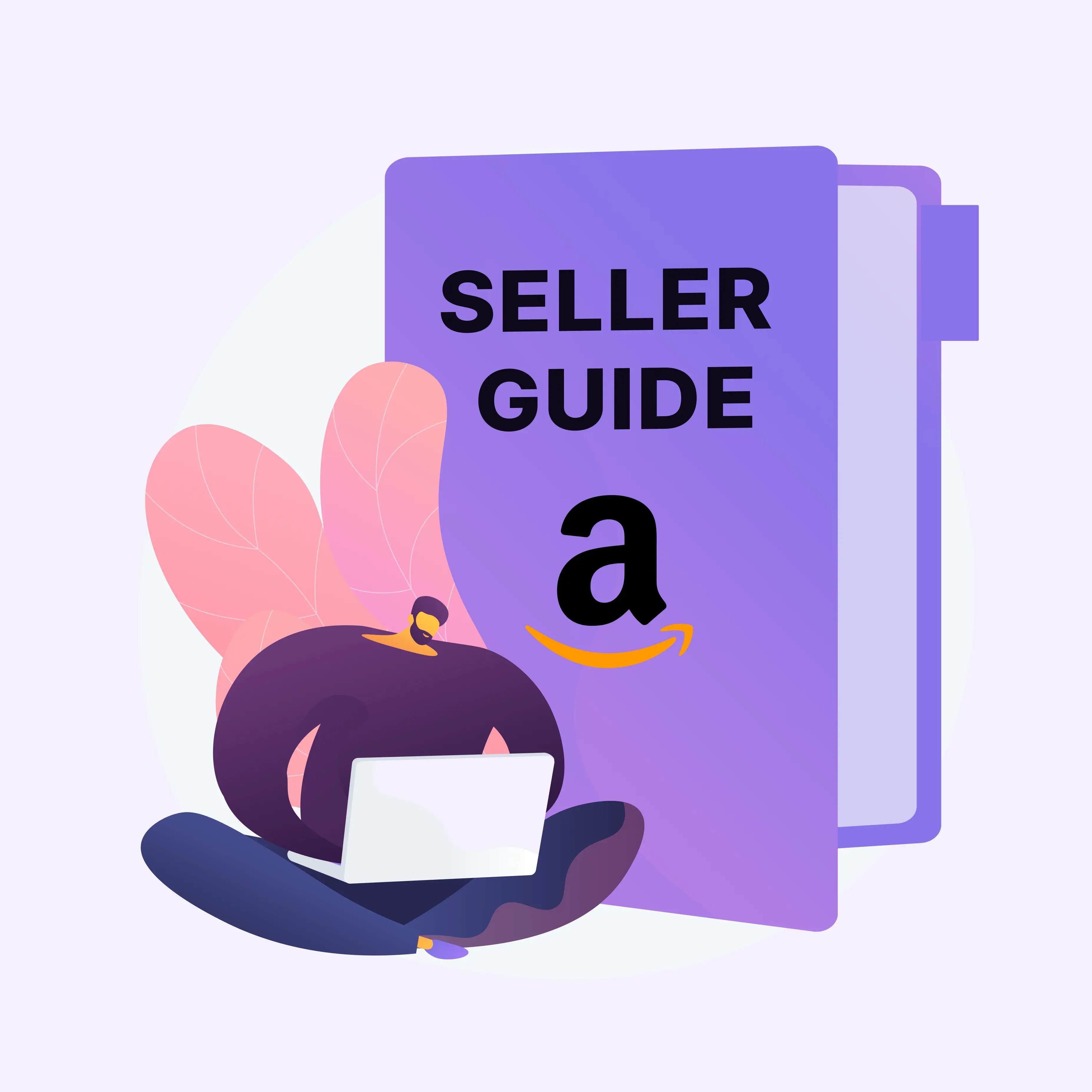
Amazon product research in 2025 is no longer guesswork – it's a precise, system-driven process that separates profitable sellers from the rest. Whether you’re scaling a wholesale model, sourcing online arbitrage or dropshipping deals, how you research products directly impacts your success.
In this guide, you’ll master two key workflows for Amazon product research: automated bulk research for wholesale sourcing and advanced, single-product analysis for high-margin listings. We’ll break down both step by step – from tools and supplier price list scanning to real-world signals and product validation.
Let’s break down how to move from “just browsing” to building a portfolio of profitable, low-risk Amazon leads.
What Is Amazon Product Research?
Amazon product research is the process of identifying items to resell on Amazon that have strong sales potential and enough margin to make them profitable after fees, shipping, and sourcing costs. For resellers, it’s about spotting products that are already selling – not inventing new ones – and finding reliable suppliers who can match the demand.
Without product research, sourcing becomes guesswork. You risk stocking inventory that doesn’t move or competing in saturated niches where prices are in a race to the bottom. Product research helps you avoid dead inventory and discover high-velocity, low-risk opportunities that fit your sourcing model – whether that’s wholesale, online arbitrage, or dropshipping.
In 2025, Amazon product research is a tool-first process. Manual scrolling is nearly obsolete – data-driven decisions now start with software. Tools like Seller Assistant help you evaluate thousands of ASINs, spot hidden trends, and filter by critical metrics like BSR, Buy Box consistency, sales velocity, and brand gating. The game isn’t just about finding winners – it’s about systematically eliminating losers before you buy.
Why Amazon Product Research Matters

Effective Amazon product research is the difference between scaling profitably and burning cash on unsellable inventory. For resellers working in wholesale, OA, or dropshipping, research isn't just helpful – it's the foundation of every smart sourcing decision. Here's why it matters in 2025 more than ever:
Avoid buying dead inventory
Poor research often leads to products that sit in your FBA warehouse for months, racking up storage fees and tying up capital. Good research helps you validate demand and avoid products with low turnover.
Spot profit before you commit
Margins are tight on Amazon. Research lets you estimate margin and ROI upfront, factoring in selling fees, shipping, taxes, and supplier costs – before you ever place an order.
Beat the competition early
The Amazon marketplace moves fast. Research helps you catch fast-rising trends, low-competition gaps, and underpriced products before other sellers flood the listing.
Understand the real sales volume
BSR (Best Seller Rank) is not enough. Research tools give you a clearer picture of real monthly sales, how fast the product sells, and how often the Buy Box rotates – data you can't see with a quick listing scan.
Consider selling eligibility and risks
With proper research, you can filter out products that you can’t sell, or are prone to IP complaints. That protects your account health and avoids costly takedowns.
What Makes a Profitable Amazon Deal?
.webp)
Amazon product research is not about browsing or guessing – it’s about verifying that a product meets a defined checklist. Resellers need to evaluate multiple factors before investing: demand, margins, risk level, and the ability to actually sell the item.
In 2025, a profitable product isn’t just one that looks good on paper. It needs to sell consistently, generate strong ROI, and carry minimal risks. Below is a complete checklist of the criteria that every product should meet before making it into your sourcing list.
You must be eligible to sell the product
Before evaluating a product, check whether your account is allowed to sell it. Some products you may not be eligible to sell on your account, especially for new or low-volume sellers. You should verify this early to avoid wasting time and money on inventory you can’t list.
The product must meet your profit expectations
Calculate if the product will deliver the profit you need. Factor in your supplier cost, Amazon referral fees, FBA or FBM fees, shipping, and any additional charges like prep or VAT. Use Amazon’s FBA/FBM calculators to run both fulfillment scenarios.
- Profit
Profit is the dollar amount left after all expenses are deducted from the selling price.
- ROI
Return on Investment (ROI) shows profit as a percentage of total sourcing costs. A healthy range is 15–30% or higher.
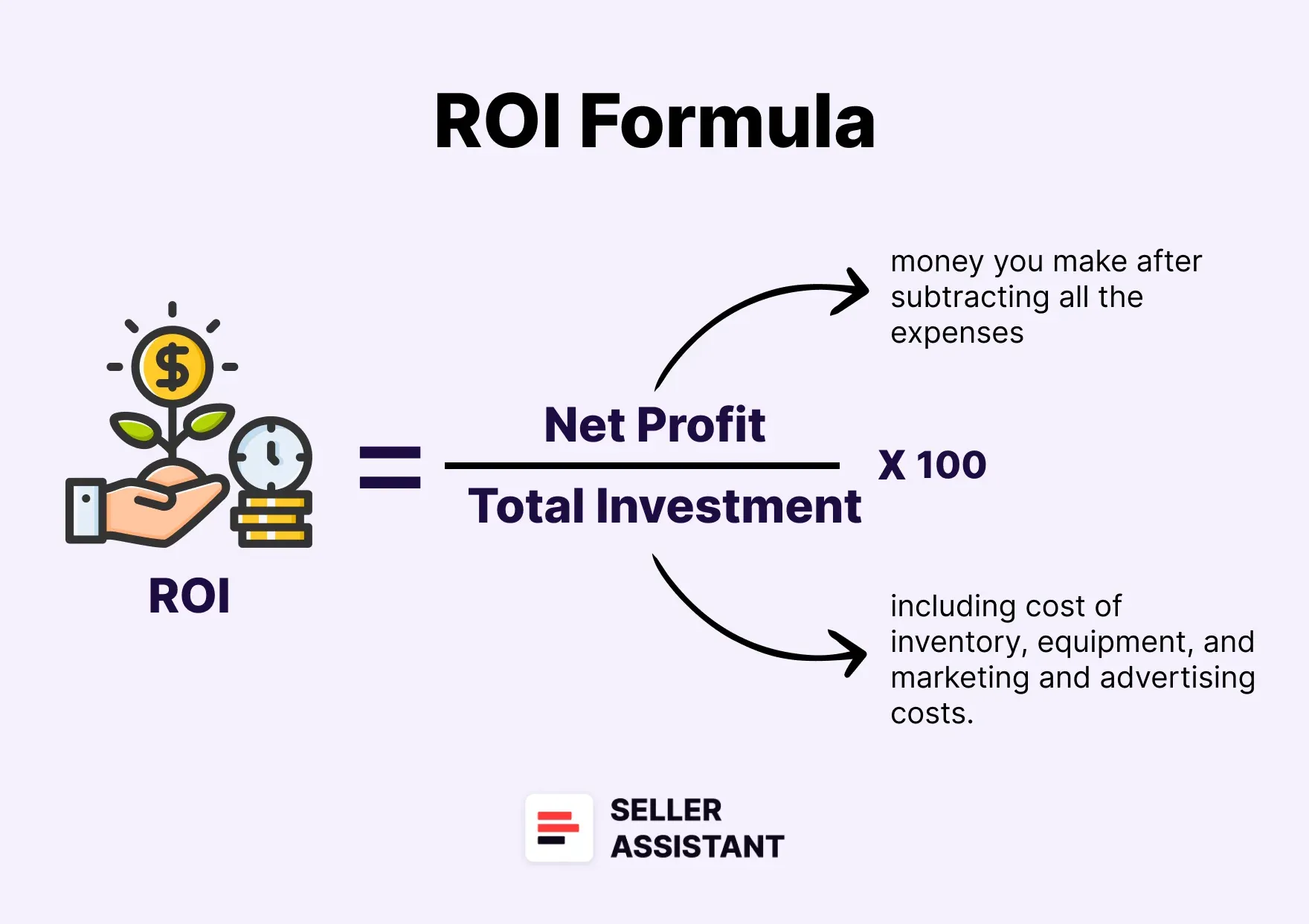
- Margin
Margin shows profit as a percentage of the selling price. Aim for 15% or more.
The product must sell consistently
Look at BSR (Best Sellers Rank), BSR drops, and sales velocity to evaluate real sales volume. Products with strong demand will turn inventory faster and minimize FBA storage fees. Use tools to confirm consistent movement, not one-time spikes.
The product must have manageable competition
Evaluate how many sellers are on the listing – especially FBA sellers. If there are 3-15 FBA sellers, competition is usually healthy. If Amazon is also a seller or dominates the listing, it’s often a red flag. Avoid products where price wars are driving the Buy Box price down.
The Buy Box must rotate fairly
Check how often the Buy Box rotates and how much Buy Box % each seller gets. If one seller or Amazon controls it most of the time, your chance of winning is low. Fair Buy Box sharing across multiple sellers means the product is a better resell candidate.
You must be able to estimate realistic monthly sales
Use data tools to estimate how many units you can expect to sell per month. This helps calculate how much to order and what revenue you can project. It's key to scaling without overstocking or under-investing.
The product must not be restricted
Check if the product falls into a restricted category (e.g., hazmat, adult, etc.). If it is restricted, you’ll need Amazon’s approval to list it – which may involve submitting invoices or certificates. Use tools that flag restricted listings in real time.
The product must not trigger IP complaints
Verify whether the brand has a history of filing intellectual property complaints. Products with active IP alerts should be avoided unless you have authorization to resell. One unresolved complaint can suspend your listing and cost you money.
The product must be free of hidden risks
- Look for characteristics that could add unexpected costs or complications:
- Heavy and bulky: Increases fulfillment and shipping costs.
- Fragile: Requires special packaging, increasing prep fees.
- Meltable: Only eligible for sale during October–April via FBA.
- Hazmat: Requires special approval and handling.
- Adult products: Restricted category with strict ad and packaging rules.
- Generic brands: Often don’t allow listing offers from outside sellers.
The pricing must be stable and competitive
Compare the current Buy Box price to the 90-day average. If prices drop too often or too deeply, margins may be unstable. Look at the Buy Box trend, and whether it’s prone to sharp fluctuations. A predictable price range is better for long-term sales planning.
You must identify the best-selling variation
If a product has multiple variations (e.g., size, color, pack count), only a few are likely to sell well. Use the reviews-to-variation ratio to estimate which variation gets the most sales. Choose the version that dominates in reviews or ratings.
You must calculate based on correct unit quantity
If a product is sold in sets or multi-packs, your profit calculation must reflect that. Confirm the number of units per listing (e.g., pack of 2 or 3) and match your sourcing accordingly. Misjudging the bundle size can skew your ROI and cause inventory mismatches.
Types of Amazon Product Research
Amazon product research is the process of identifying profitable and low-risk products to sell – before making any buying or listing decisions. Unlike sourcing, which also involves finding a supplier and placing an order, product research is focused solely on evaluating the deal quality: demand, pricing, margins, competition, and risk.
Product research is typically performed in two ways: bulk product research and single-product research. Each method supports different reseller models – and both are essential for building a profitable Amazon catalog.
In 2025, many sellers use specialized tools for each – but one platform stands out: Seller Assistant. This all-in-one product sourcing software offers tools for both bulk research and in-depth single-product checks, making it a powerful tool for all reseller models.
Bulk product research
Bulk product research, also called wholesale price list scanning, involves analyzing hundreds or thousands of products at once using automated tools. This method is widely used by wholesale sellers, who review supplier price lists in spreadsheet format to find profitable ASINs at scale.
It’s also adopted by online arbitrage and dropshipping sellers who parse entire retail or supplier websites, extract product data, and analyze that data in bulk to surface potential deals. Bulk research allows resellers to filter products by ROI, sales rank, Buy Box trends, and eligibility – often before manually reviewing them.
Tools like Seller Assistant's Price List Analyzer streamlines this process, allowing sellers to upload wholesale lists or extracted product files and get instant product data including profitability and performance breakdown, product risks, and other product research data, and uses advanced filters to identify best deals to resell.
Single-product research
Single-product research is the process of evaluating individual products one by one. This is the go-to method for online arbitrage and dropshipping sellers, who conduct advanced research of single products one by one to identify profitable deals.
Wholesale sellers also use single-product research – typically after automated bulk scans – to verify the metrics of shortlisted products. This deeper check includes analyzing BSR history, Buy Box rotation, IP complaints, restriction status, and seller competition, ensuring the product meets all profitability and risk criteria before purchase.
Seller Assistant Extension simplifies this workflow. It overlays key product data directly on Amazon listings and shows all necessary product research metrics like profit, ROI, Buy Box %, seller types, alerts, restriction status, etc. – all without switching tabs.
Note. Seller Assistant is a comprehensive product-sourcing software that helps Amazon sellers quickly find high-profit deals. It combines three extensions: Seller Assistant Browser Extension, and IP-Alert Chrome Extension by Seller Assistant, and VPN by Seller Assistant, Amazon seller tools: Price List Analyzer, Brand Analyzer, Seller Spy, Bulk Restrictions Checker, and API integrations, and features: Storefront Widget, Side Panel View, FBM&FBA Profit Calculator, Quick View, Stock Checker, IP Alert, Variation Viewer, Sales Estimator, Offers, and Restrictions Checker.
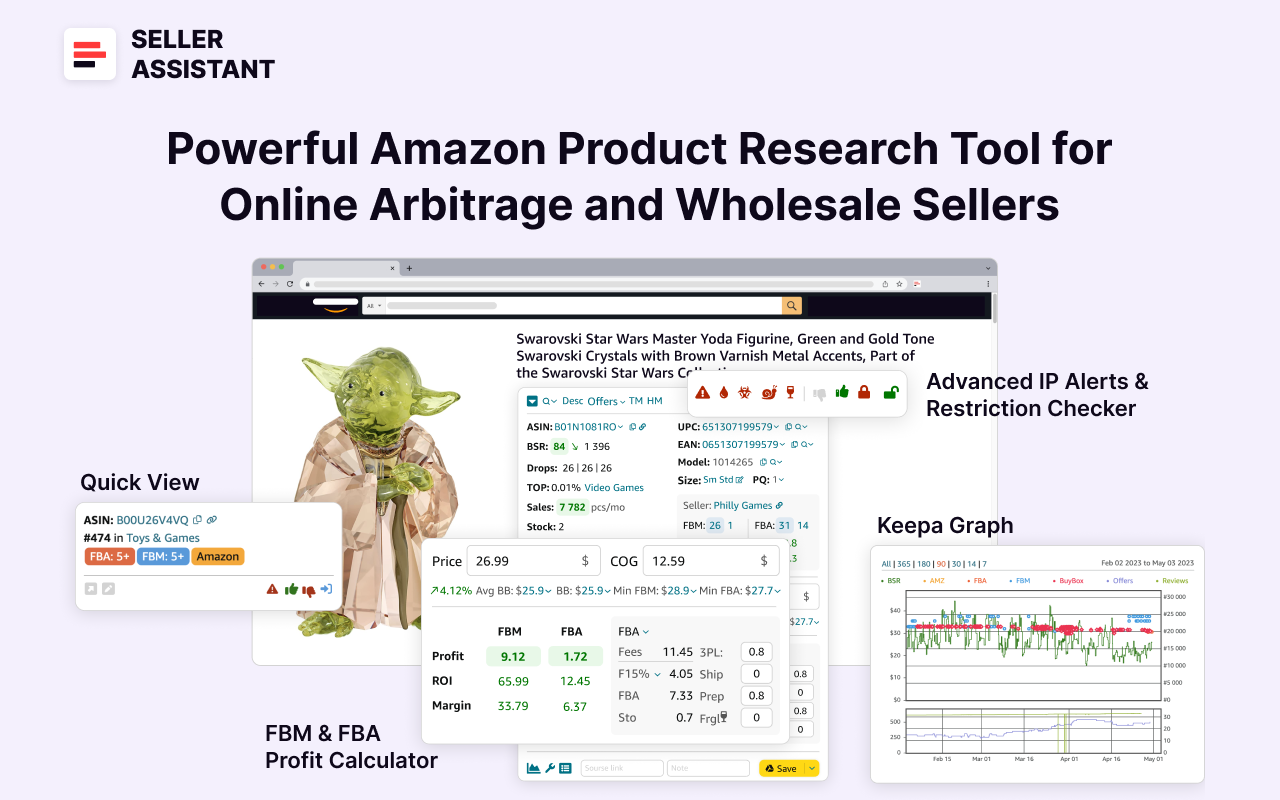
It offers a robust toolkit of over 20 features built to streamline every part of the sourcing process – from bulk scanning wholesale supplier sheets for high-margin leads to deep product research and advanced brand and competitor analysis. By using this FBA and FBM product sourcing software, you can easily identify products that have the potential to be sold well on Amazon.
How to Conduct Bulk Amazon Product Research
Automated bulk product research involves scanning large product lists from suppliers to identify profitable, low-risk items at scale. This method is ideal for wholesale, online arbitrage, and dropshipping sellers managing high-volume sourcing operations.
The main goal is to filter supplier catalogs quickly to surface high-ROI, low-risk products – reducing time spent on manual checks and avoiding costly mistakes. Instead of evaluating products one by one, this approach relies on software to automatically match products to Amazon listings and return key performance and profitability data.
Use Seller Assistant’s Price List Analyzer
One of the most effective tools for automated bulk research is Seller Assistant's Price List Analyzer. It lets you upload supplier price lists, match products to Amazon ASINs, populate your spreadsheet with actionable insights – including restrictions, profit, ROI, sales velocity, risk flags, and more, and apply advanced filters to find the deals meeting your sourcing criteria.
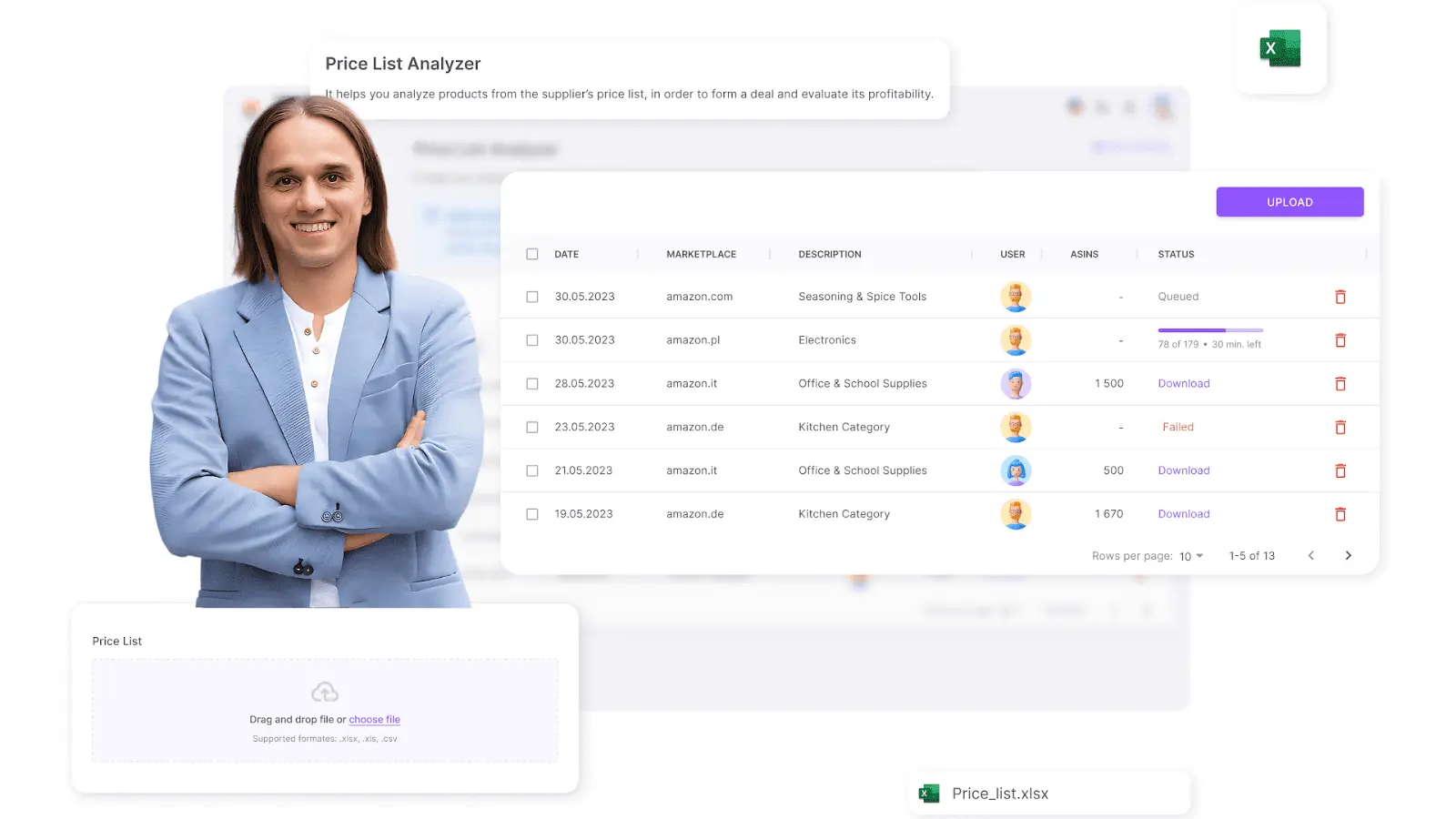
What Price List Analyzer does
- Matches supplier products to Amazon ASINs automatically
- Flags restricted or ineligible products for your account
- Populates your spreadsheet with essential selling metrics:
- Sales data: BSR, trend, estimated sales velocity, and other performance indicators
- Profitability metrics: Profit, ROI, margin, breakeven point
- Price history: Average Buy Box price and historical pricing (30/90/180-day views), min FBA/FBM prices
- Fee breakdowns: Referral fees, FBA/FBM fees, storage, shipping, prep, hazmat/fragile costs
- Competition data: Seller count, Buy Box rotation, Amazon stock rate
- Risk indicators: Hazmat tags, IP complaints, meltable status, Amazon as seller
- Lets you filter the list by any metric: profitability, velocity, risk, or other criteria
- Allows tagging products with Likes/Dislikes and shortlisting best items for purchasing
- Exports your final selections as a ready-to-act sourcing sheet
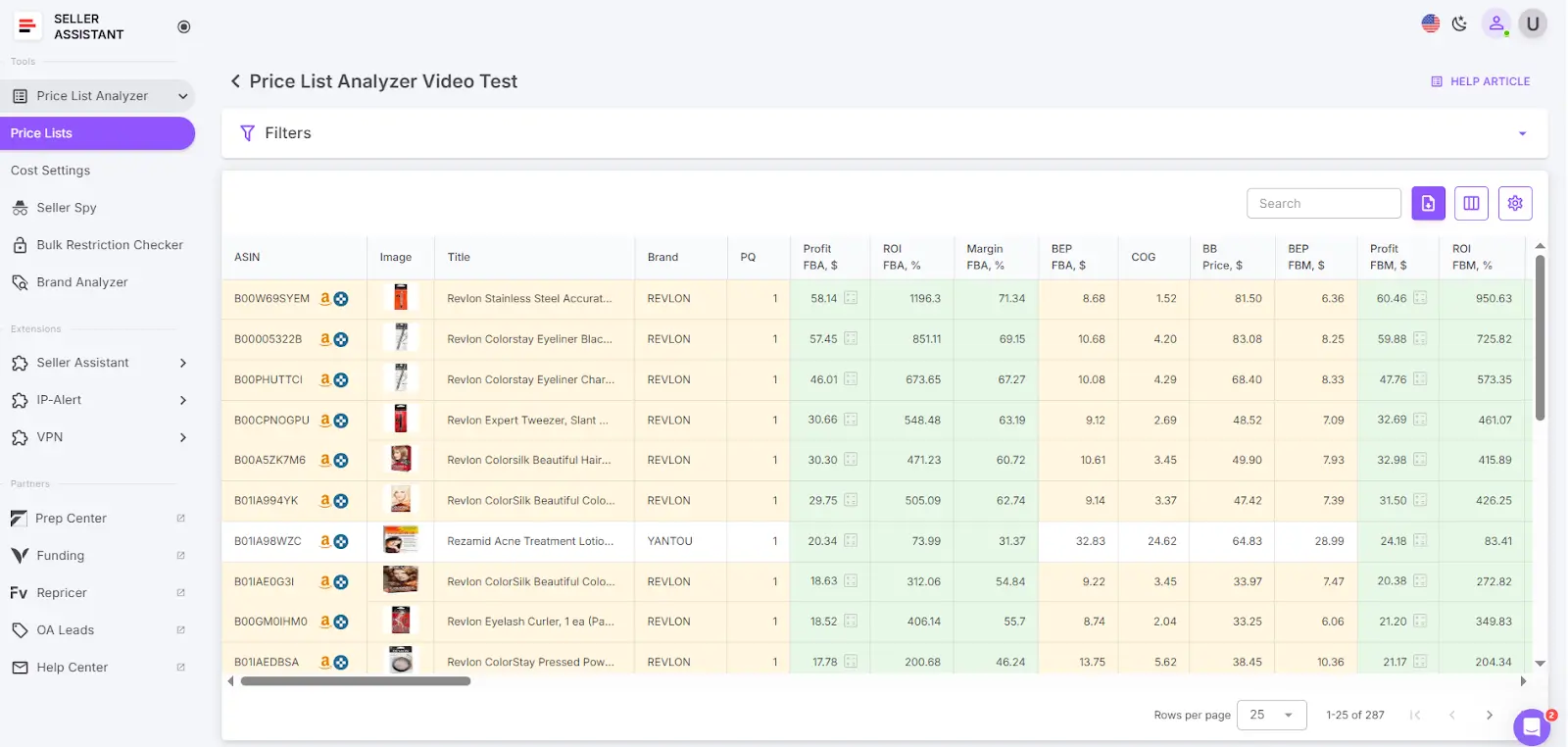
Steps to conduct bulk product research
Step 1. Sign in to your Seller Assistant account and open Price List Analyzer

Step 2. Click Upload, select your marketplace, and drag in the supplier’s product list (Excel file)

Step 3. Map required fields – such as ASIN, supplier price, or SKU – to prepare the file for analysis

Step 4. Click Analyze Price List to start scanning the products

Step 5. Once processed, use filters to highlight the most profitable, high-potential deals

Step 6. Export your final product list – now ranked, scored, and ready for confident sourcing decisions

How to Conduct Single-Product Research
Advanced Amazon single-product research is ideal for sellers who prefer a hands-on approach and want total control over product selection. This method focuses on manually finding profitable items with a visible price gap between a supplier and Amazon.
While slower than bulk research, it allows for deep, precision-based analysis of individual listings – making it perfect for online arbitrage and dropshipping sellers hunting quality deals. It's also used by wholesale sellers to verify products shortlisted by automated scans before placing large orders.
Use Seller Assistant Extension
To start your research, open a product on Amazon. With the Seller Assistant Extension, you get instant access to all core metrics – directly within Amazon, supplier websites, and even competitor storefronts. This allows for real-time deal evaluation, covering everything from profitability to risk factors, without switching between tools or tabs.
What Seller Assistant Extension Does
Seller Assistant Extension provides a full product analysis dashboard inside your browser. It’s built for sellers who need fast, detailed insights in one place:
- Product Page View: Shows ASIN, UPC/EAN, dimensions, BSR, BSR drops (monthly sales), seller count (FBA/FBM), and other detailed product data
- Quick View: Displays IP alerts, restrictions, competition, and sales rank directly on Amazon search pages
- Side Panel View: Adds sourcing data on supplier websites to instantly compare supplier prices to Amazon
- Storefront Widget: Reveals competitor seller stats – categories, top brands, reviews, and top products
- Sales Estimator: Projects estimated monthly sales and your potential share
- Stock Checker: Tracks how much inventory your competitors hold
- Pricing Metrics: Includes Buy Box price, 90-day average, min FBA/FBM, ROI pricing, break-even point, repricer minimum
- FBM&FBA Profit Calculator: Separately calculates profit, ROI, and margin, including taxes and VAT
- Restriction Checker: Flags gated products and brand-level restrictions
- IP Alert: Detects potential intellectual property violations and complaints
- Alerts and Flags: Highlights Hazmat, meltable, fragile status, and other risks
- Offers: Displays number of sellers, stock, and Buy Box share
- Variation Viewer: Shows all listing variations and highlights the best-selling ones
- Lookup Links: Helps you find suppliers on Google, eBay, Walmart, Alibaba, and more
- Notes: Lets you save product notes, supplier links, and likes/dislikes
- Google Sheets Export: Sends all research data to Sheets in one click
- Keepa Charts: Visualizes long-term price and sales trends
Steps to conduct single-product research
Step 1. Estimate demand by reviewing BSR (recommended between 1 and 200,000 with 1 being the best) and BSR drops (actual product sales) for the last 30, 90, and 180 days
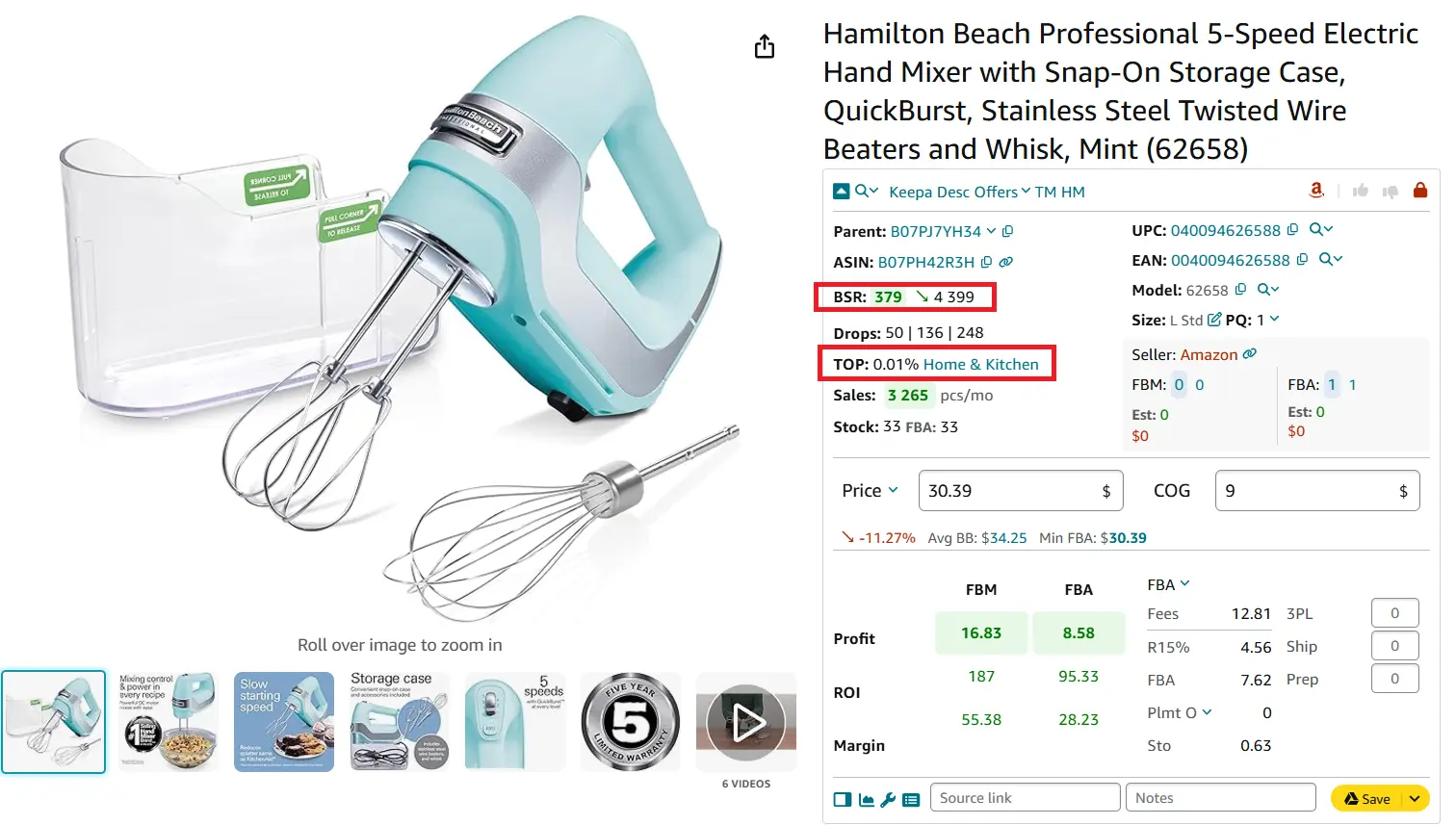
Step 2. Use the Sales Estimator to calculate expected monthly sales volume and your potential share

Step 3. Check inventory saturation using the Stock Checker for both FBA and FBM competitors

Step 4. Analyze competition by reviewing total seller count – aim for 2–15 sellers for balanced opportunity

Step 5. Use Offers feature to inspect active offers and your likelihood to win the Buy Box
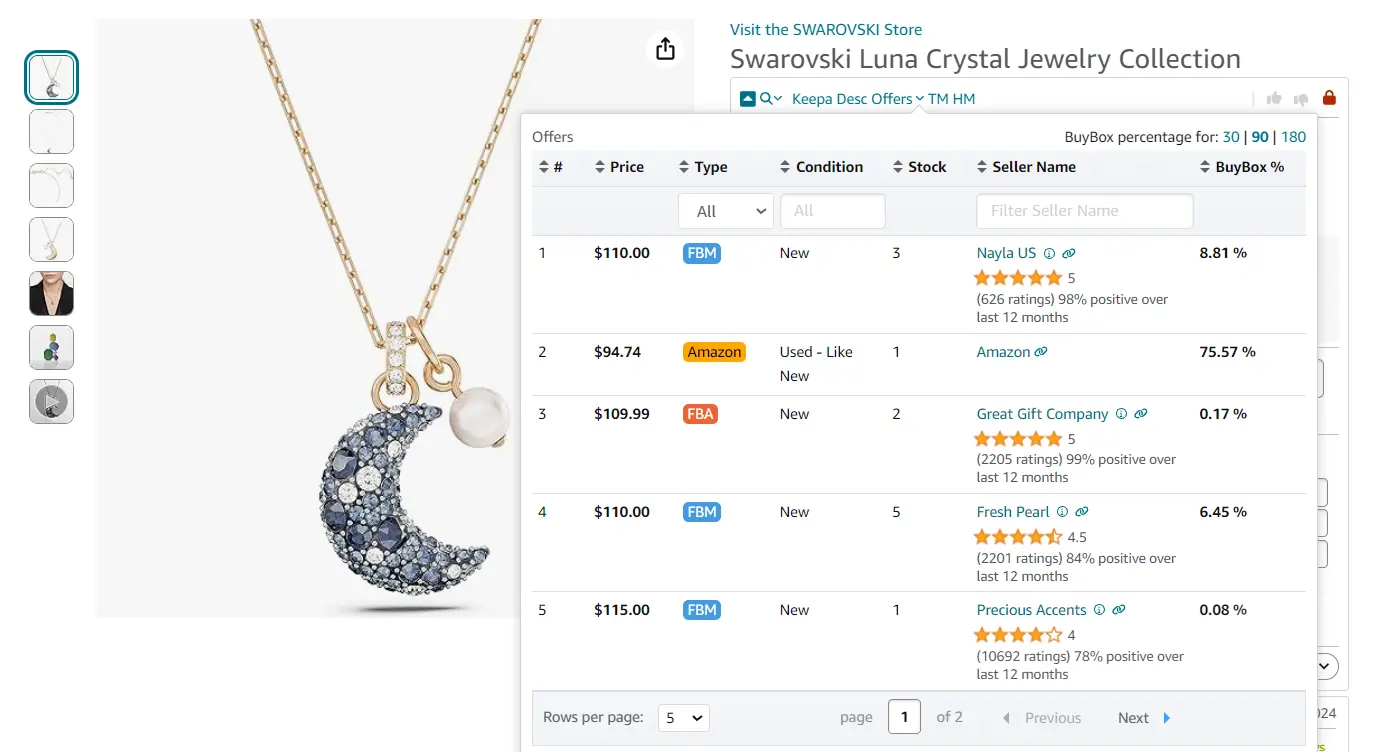
Step 6. Avoid listings where Amazon is the seller and dominates the Buy Box
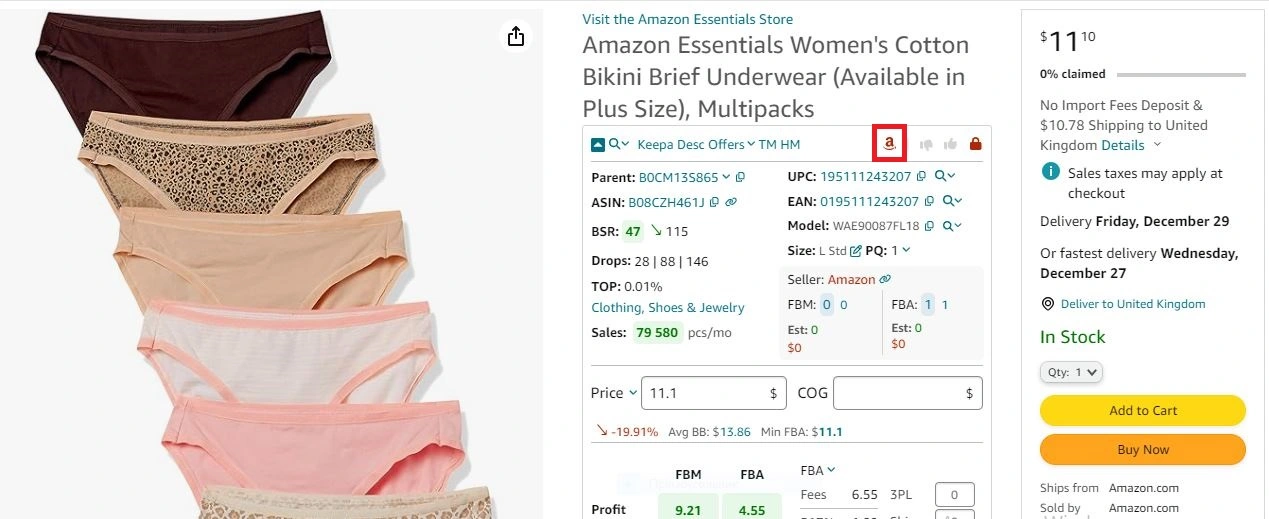
Step 7. Review Keepa Charts for at least 6 months of stable pricing and sales data
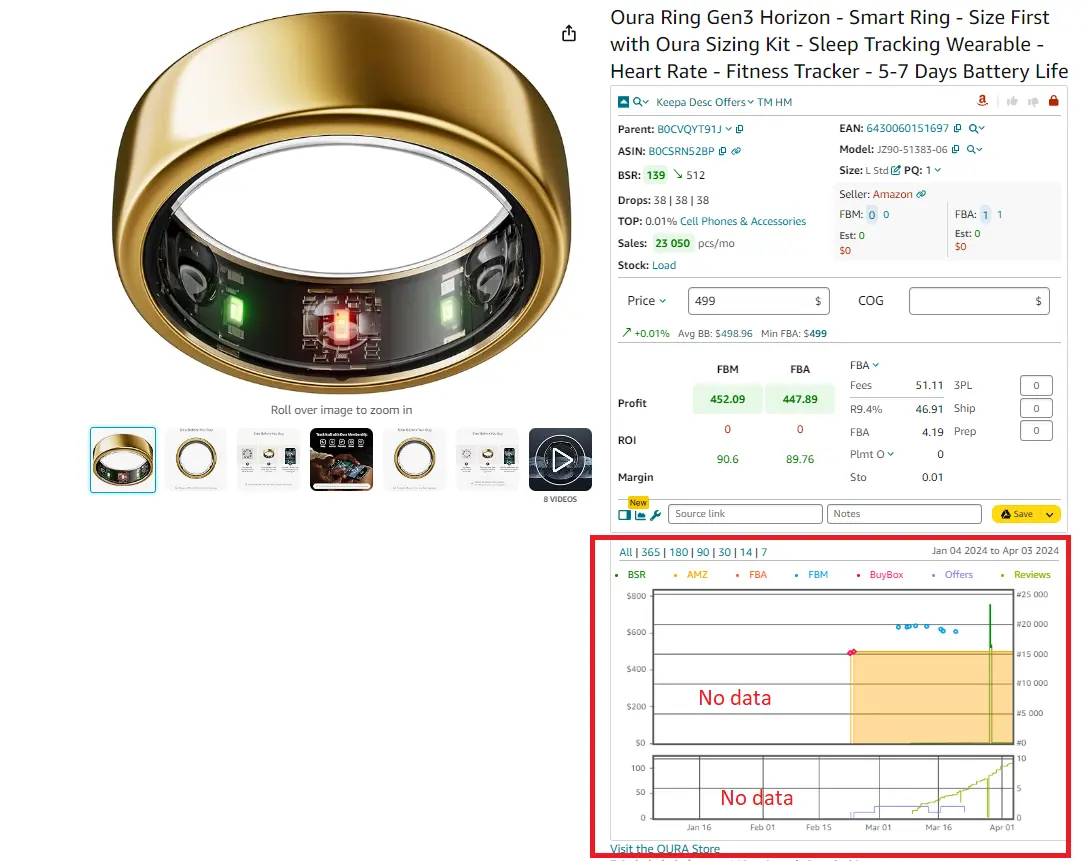
Step 8. Analyze pricing by comparing the current Buy Box, average price, and min FBA/FBM prices
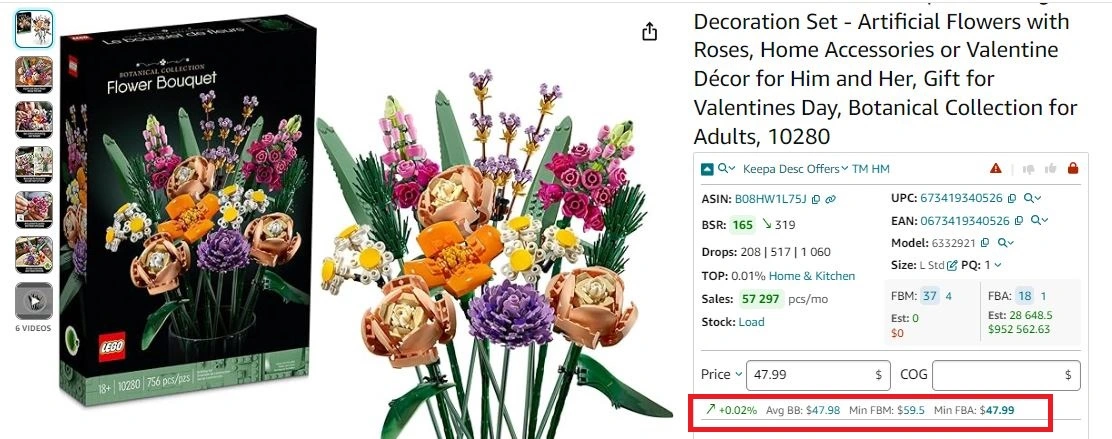
Step 9. Use Variation Viewer to identify the top-selling version of the product
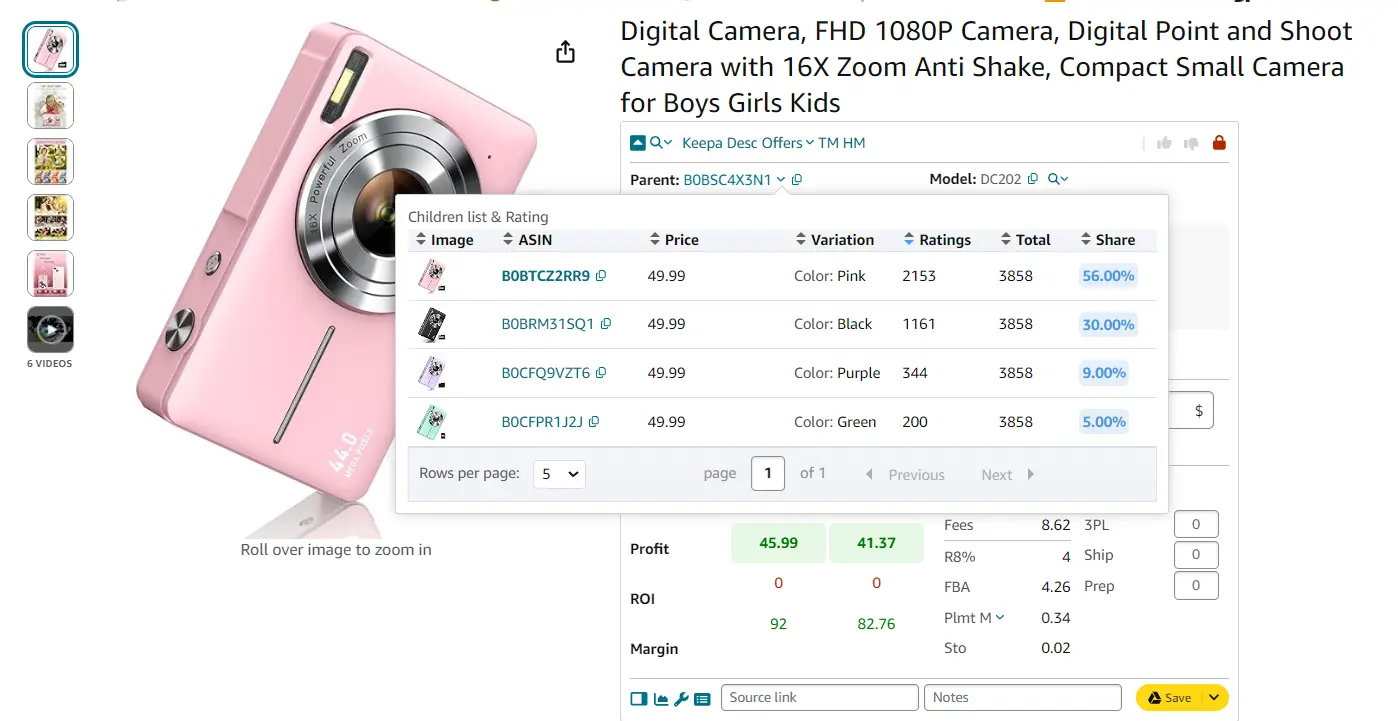
Step 10. Check restrictions and alerts – gated status, IP risks, Hazmat, meltable, fragile warnings. etc.
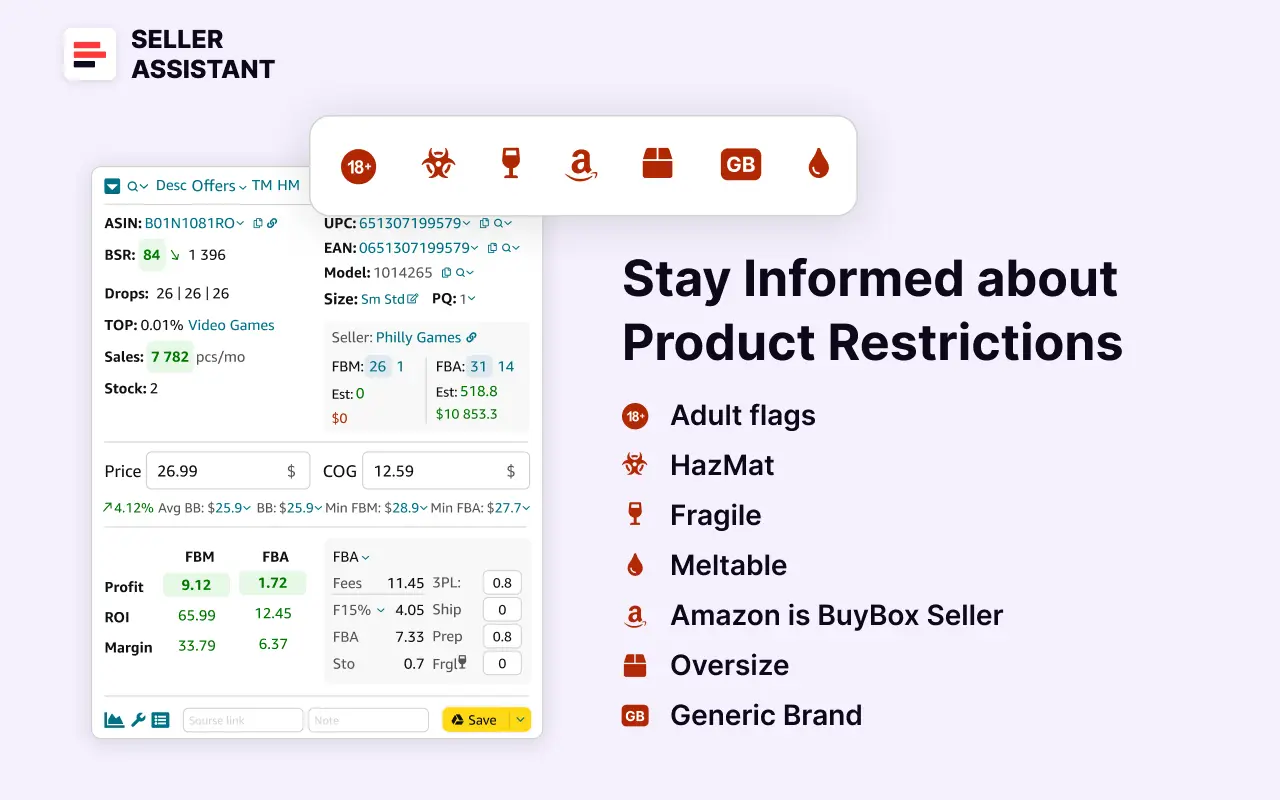
Step 11. Evaluate product reviews – focus on listings with strong 4–5-star ratings and minimal negatives
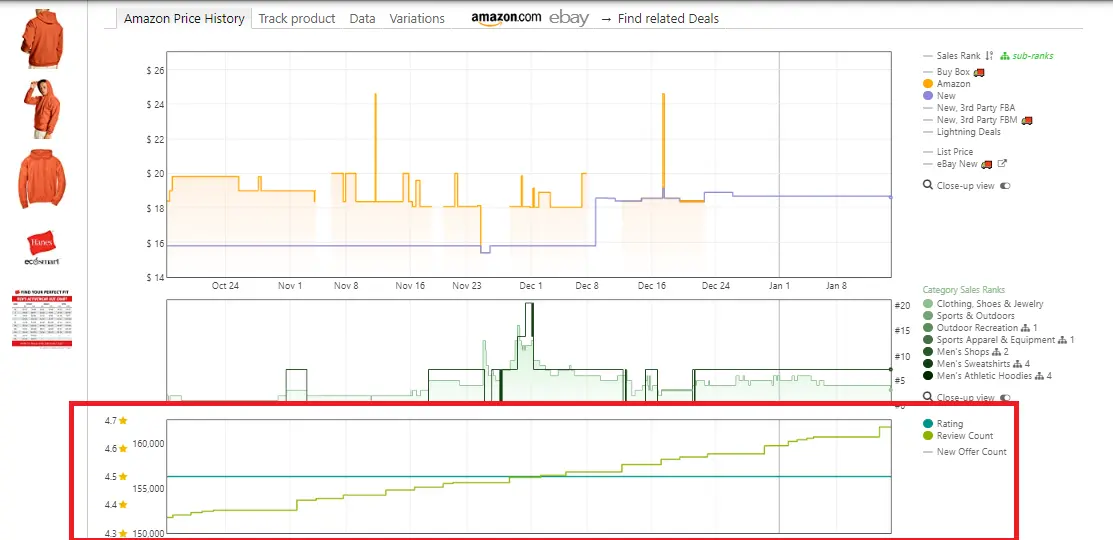
Step 12. Use Lookup Links to find matching supplier offers on major platforms like Walmart, Alibaba, eBay, and Google
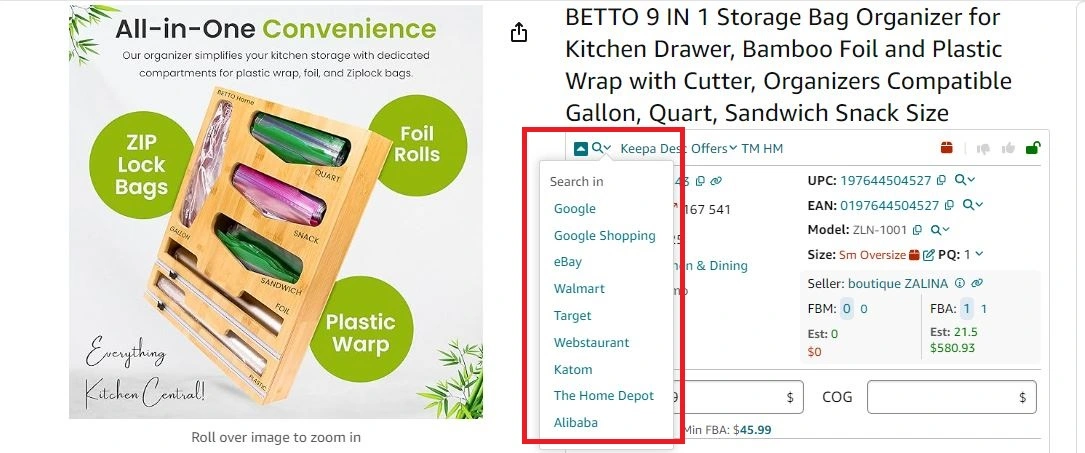
Step 13. Finalize profitability using the FBM&FBA Profit Calculator – input cost of goods and logistics to get ROI and margin
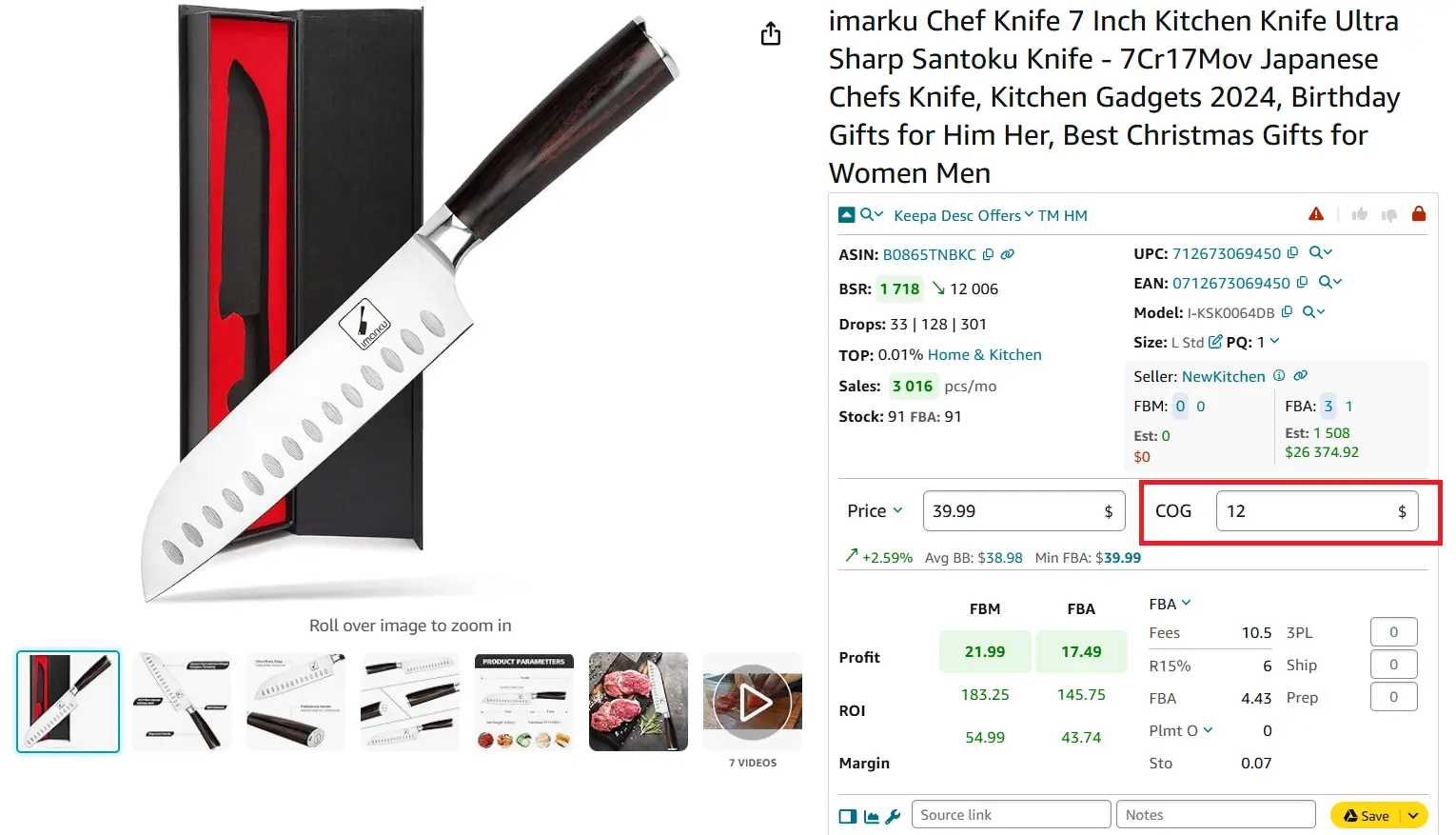
FAQ
What is the difference between product research and product sourcing?
Product research is about analyzing products to verify if they’re profitable, in-demand, and safe to sell. Product sourcing comes later – it involves finding a supplier and buying the product.
Do I need both bulk and single-product research?
Yes – bulk research helps you find potential deals at scale, and single-product research lets you validate each deal before purchasing. Together, they reduce risk and improve ROI.
Can online arbitrage sellers use bulk research tools?
Absolutely. OA sellers can extract product data from retail websites and analyze them in bulk using tools like Seller Assistant’s Price List Analyzer.
Why is Buy Box data important in product research?
Because around 80% of Amazon sales happen through the Buy Box, knowing who owns it and how it's shared is critical to estimating your chances of getting sales.
What tools do I need to start Amazon product research?
You need a bulk analyzer for supplier lists and a browser extension for manual listing checks. Seller Assistant combines both in one platform to simplify the process.
Final Thoughts
In 2025, profitable Amazon selling starts with smart product research. Whether you’re analyzing thousands of ASINs through bulk scans or diving deep into single listings, your success depends on using data to guide every decision.
Bulk product research helps you filter massive supplier lists fast, while single-product research lets you validate deals with precision. The combination of both methods – powered by tools like Seller Assistant – gives resellers a clear competitive edge in today’s fast-moving marketplace.
Seller Assistant is an all-in-one product sourcing software offering all the features vital for product sourcing. It combines three extensions: Seller Assistant Extension, IP Alert, and VPN by Seller Assistant, tools: Price List Analyzer, Brand Analyzer, Seller Spy, Bulk Restrictions Checker, and API integrations, and features: Storefront Widget, Side Panel View, FBM&FBA Profit Calculator, Quick View, Stock Checker, IP Alert, Variation Viewer, Sales Estimator, Offers, Restrictions Checker, and other features that help quickly find high-profit deals. Seller Assistant also offers integration with Zapier allowing to create custom product sourcing workflows.

.svg)













